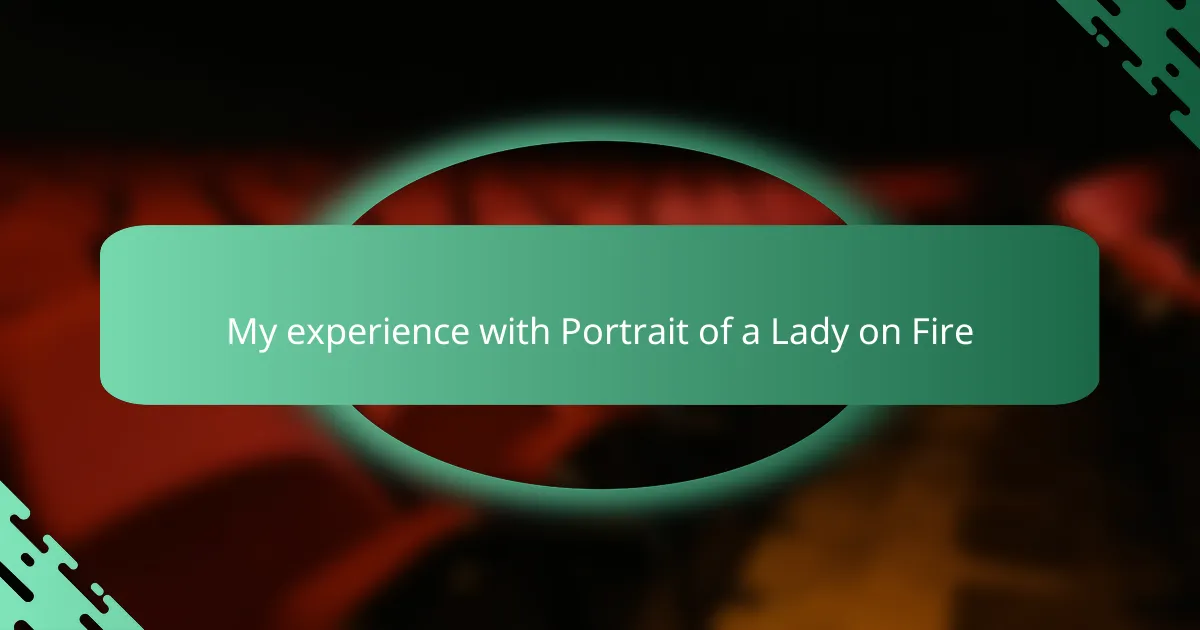Key takeaways
- “Portrait of a Lady on Fire” explores themes of forbidden love, identity, and female agency through the passionate relationship between an artist and her muse.
- The film’s use of silence and natural lighting enhances emotional depth, inviting viewers to engage deeply with the characters’ experiences.
- Character dynamics, particularly between Marianne and Héloïse, highlight struggles for autonomy and self-expression in a restrictive society.
- The artistic journey depicted in the film serves as a powerful reminder of how creativity can facilitate emotional connection and reflection.

French movie review overview
French cinema has a unique way of immersing viewers into its narrative, and “Portrait of a Lady on Fire” is a prime example of this mastery. The film beautifully combines visual artistry with emotional depth, leaving a lasting imprint on my heart. I often wonder how a film can evoke such intense feelings, and this movie does precisely that through its poignant storytelling.
What struck me most was the exploration of forbidden love against the backdrop of stunning landscapes. The deliberate pacing allows the audience to savor each moment, which made me reflect on the nature of love and longing. I find it fascinating how French films often prioritize emotion over action, inviting us to engage more deeply with the characters’ experiences.
As I watched, I was captivated by the way the film uses silence to communicate profound emotional truths. It made me think: how often do we overlook the power of non-verbal communication in our own lives? Personally, I walked away not just entertained but profoundly moved, appreciating how this film beautifully captures the complexities of human connection.
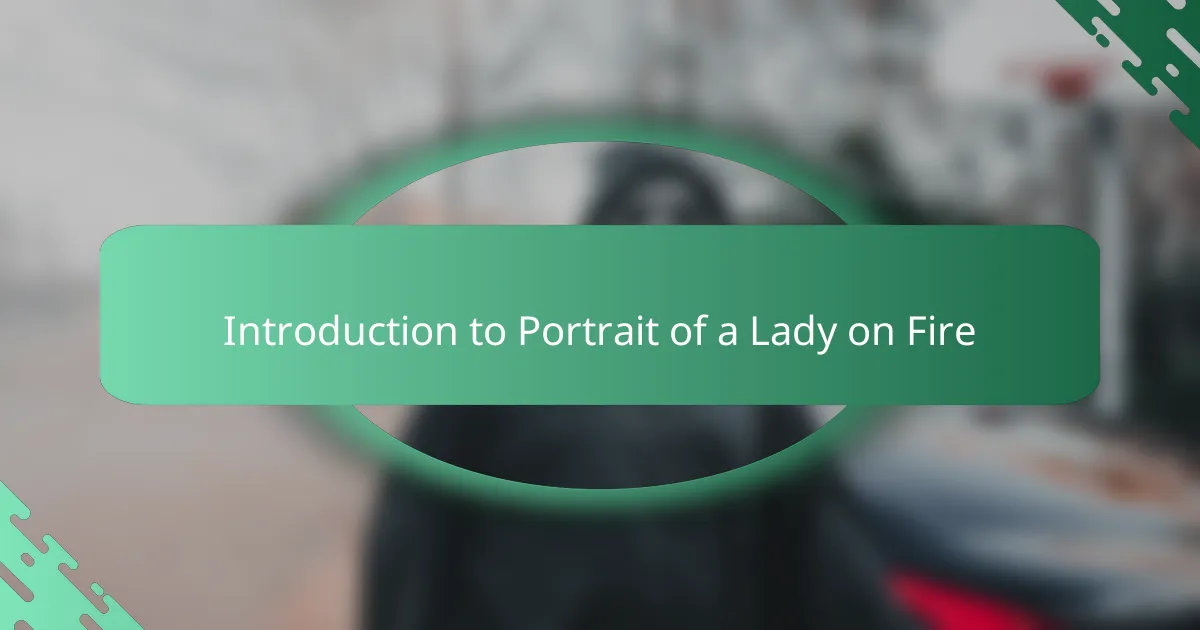
Introduction to Portrait of a Lady on Fire
“Portrait of a Lady on Fire” is a visual masterpiece that swept me off my feet with its stunning cinematography and profound storytelling. Set in the late 18th century, it delicately explores themes of love and identity through the passionate bond between an artist and her muse. Watching it, I found myself immersed in the emotional intensity of the characters, which sparked a resonance within me about the complexities of love and sacrifice.
In preparing for the film, I was struck by the power dynamic portrayed through the lens of a female artist, which is not only captivating but also thought-provoking in the context of women’s roles in art and society. The film’s use of color, light, and silence made me reflect on the unspoken emotions and gestures that often convey more than words could ever express.
| Aspect | Details |
|---|---|
| Director | Céline Sciamma |
| Release Year | 2019 |
| Setting | Late 18th century Brittany, France |
| Main Themes | Love, Identity, Art |
| Notable Techniques | Use of Silence, Color Palette |
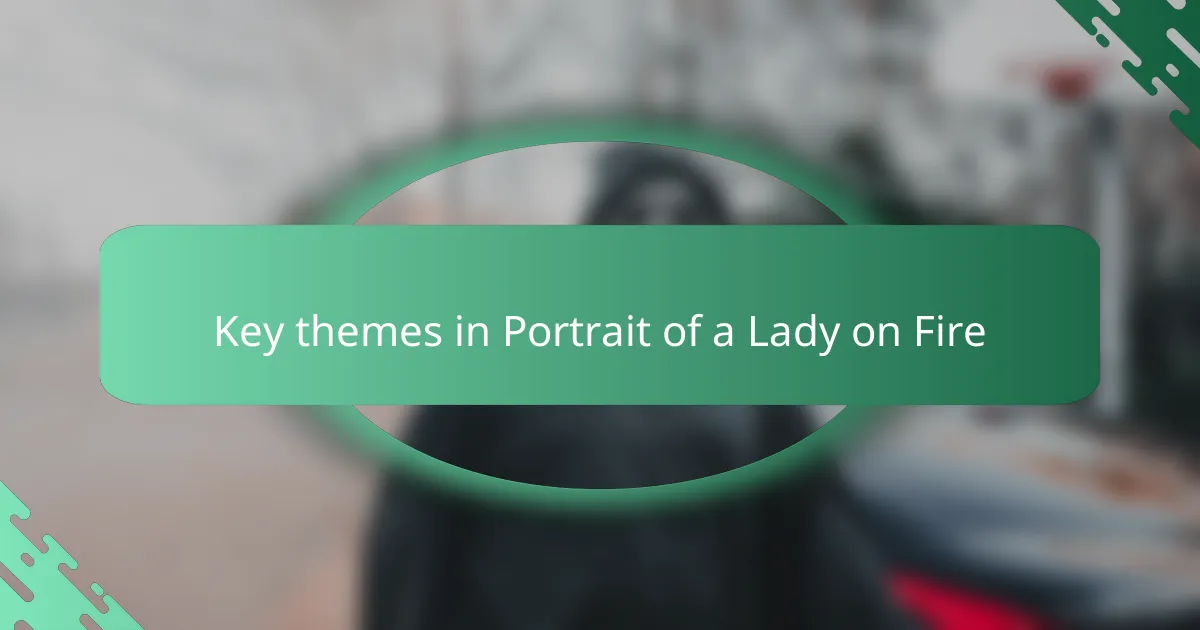
Key themes in Portrait of a Lady on Fire
As I delved deeper into “Portrait of a Lady on Fire,” I was struck by the theme of unfulfilled desire, beautifully layered throughout the narrative. The film paints a vivid picture of longing through subtle glances and fleeting touches, reminding me of times in my own life when emotions felt just out of reach. It made me question: how often do we experience a strong connection only to be impeded by circumstance?
The exploration of female agency is another key theme that resonated with me. The characters navigate societal constraints, which adds an intriguing tension to their relationship. Watching them assert their choices, even when faced with formidable challenges, brought back memories of my own struggles for autonomy. It emphasizes the importance of carving out one’s identity, in both art and love, even when faced with societal expectations.
Lastly, I couldn’t ignore how art itself serves as a central theme in the film. The act of creation mirrors the characters’ emotional journeys, blurring the lines between artist and muse. I found myself reflecting on my experiences in creative endeavors, realizing that art often becomes a powerful vehicle for expressing feelings that words alone cannot capture. This theme deeply resonated with me, revealing the intricate dance between creativity and intimacy.
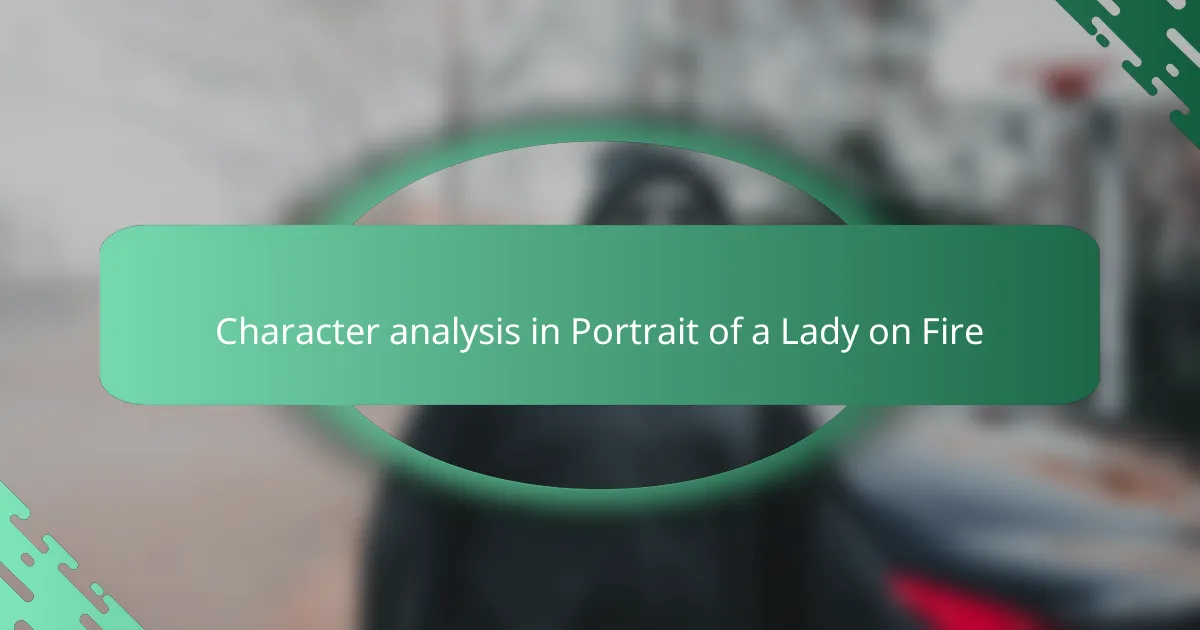
Character analysis in Portrait of a Lady on Fire
The character dynamics in “Portrait of a Lady on Fire” are profoundly layered, particularly between Marianne and Héloïse. As an artist, I felt an immediate connection to Marianne’s passion and determination. She is not just painting a portrait; she is capturing an entire essence and identity, which brought back memories of my own moments of creative vulnerability. Have you ever poured your soul into something, only to find that the subject still feels elusive?
Héloïse’s character also struck me as compelling—her struggle for autonomy in a restrictive society resonated deeply. Witnessing her transformation from a reluctant muse into an empowered woman sparked reflections on similar battles for my own self-expression. I often think about how society tries to mold us, yet here is a character who actively resists that mold. Isn’t it fascinating to see how the pursuit of freedom and love can ignite such passion?
Then there’s the character of Sophie, whose presence adds another layer to the narrative. She represents the unspoken connections and unfulfilled desires that often linger in the background. I found myself recalling friendships that have influenced my life profoundly, displaying how even minor characters can leave a lasting impact. Each character in this film serves as a reminder of the complex threads that weave our own narratives, don’t you think?
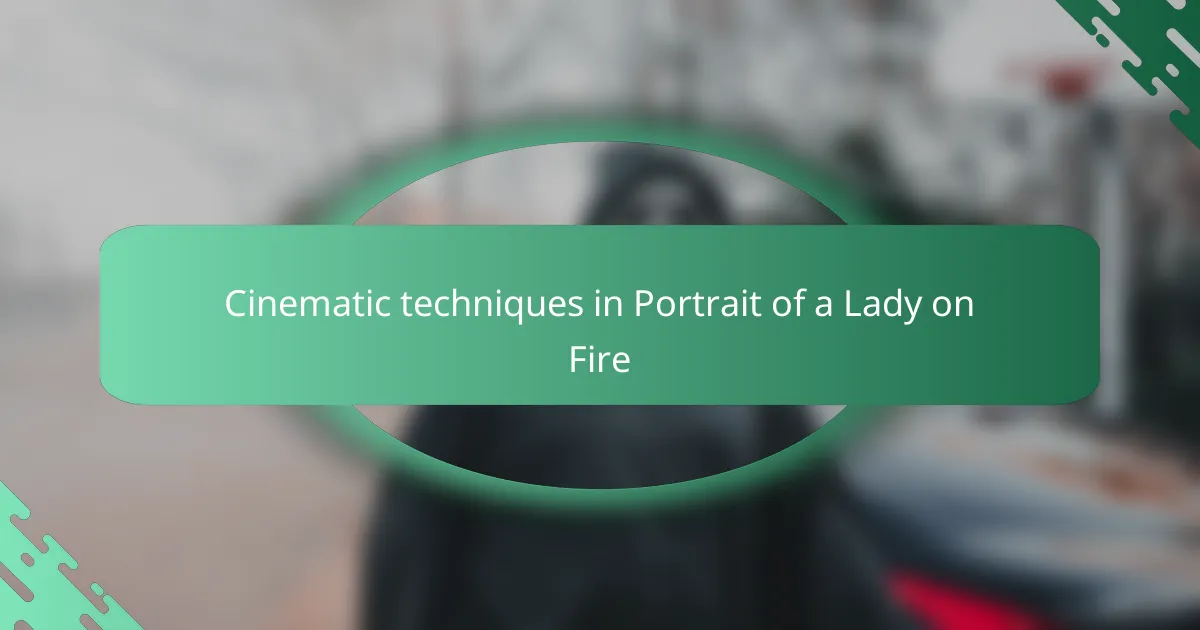
Cinematic techniques in Portrait of a Lady on Fire
The cinematic techniques in “Portrait of a Lady on Fire” are nothing short of mesmerizing. One aspect that stood out to me was the use of natural lighting. It creates a soft, intimate atmosphere, allowing the viewer to feel the warmth of the characters’ emotions. I often find myself appreciating how a film can use light not just to illuminate, but to enhance the story being told. Have you ever noticed how a well-lit scene can evoke a specific mood?
Another remarkable technique is the film’s framing and composition. Each shot feels like a work of art, meticulously crafted to draw the viewer into the world of 18th century Brittany. I remember being struck by how often I could pause the film and see a beautifully composed image, almost like a painting. This attention to detail made me reflect on my own experiences with art, and how every brushstroke can convey a deeper meaning. It begs the question: how does our perception of beauty influence our understanding of love and desire?
Silence plays a crucial role in this film, further enhancing its emotional resonance. Moments filled with quietude invite us to engage with the characters’ unspoken emotions. I found myself holding my breath during these instances, as if the weight of their feelings was palpable. Have you ever experienced a moment where silence spoke louder than words? In “Portrait of a Lady on Fire,” each pause serves as a reminder of the depth of connection that transcends verbal communication, making the viewer reflect on their own relationships.
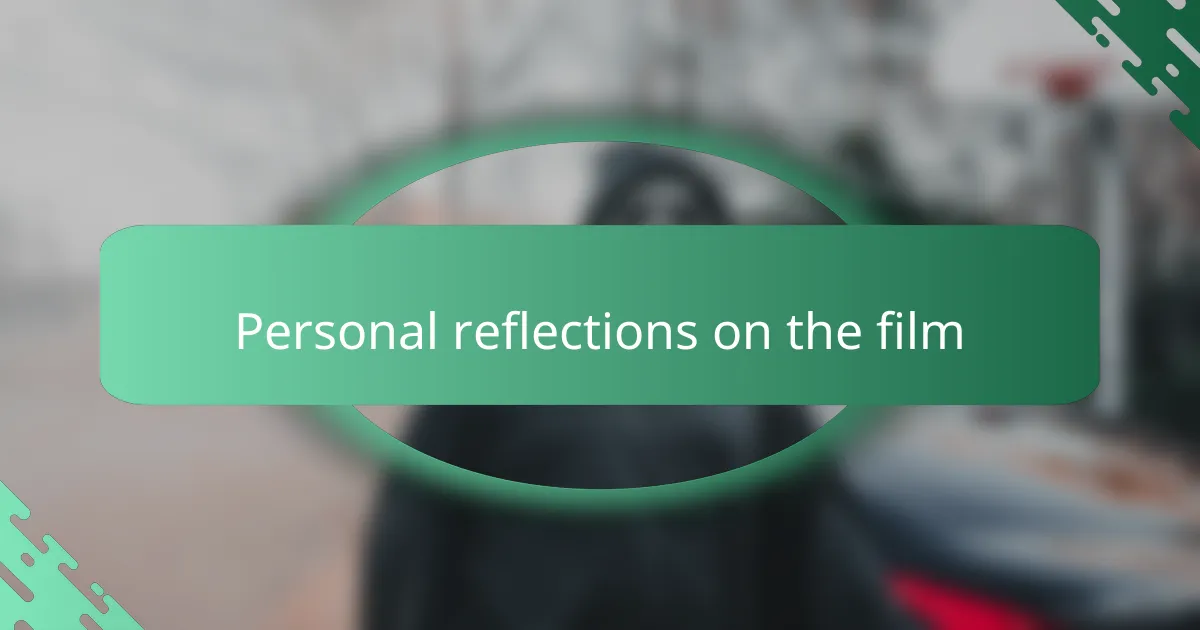
Personal reflections on the film
The first time I watched “Portrait of a Lady on Fire,” I couldn’t shake off the feeling that I was witnessing something truly special. The storytelling felt intimate, as if I were peering into the private lives of Marianne and Héloïse. I often reminisce about moments in my own life when I felt such a profound connection with someone, where words fell short and emotions ran deeper than the surface. Is it not amazing how film can transport us back to those memories?
I was deeply moved by how the film navigates the complexities of love and choice, particularly through the characters’ struggles. Watching Marianne and Héloïse navigate their societal confines resonated with my experiences of seeking authenticity in a world filled with expectations. It made me reflect: how often do we find ourselves caught between what we desire and what is expected of us? Their journey pushed me to reconsider my own choices and the lengths I would go for love.
Additionally, I found the artistic elements profoundly relatable. The act of creation mirrored my own experiences as a creator, striving to express emotions that often felt trapped within me. I couldn’t help but think about how, like Marianne, I often channel my feelings into my work. Have you ever felt that urgent need to create, only to realize later that it was your way of processing something deeper? This film beautifully showcases how art can be both a refuge and a means of connection, striking a chord that lingers long after the credits roll.
